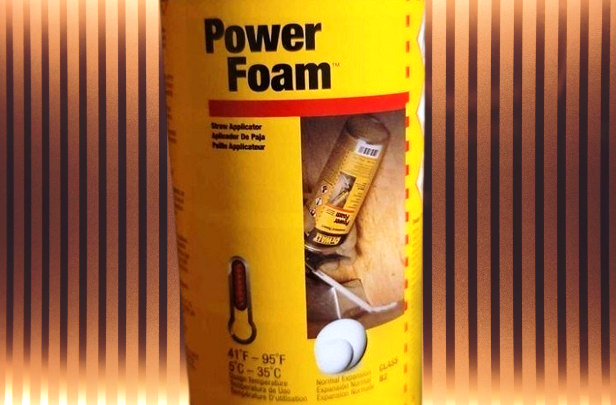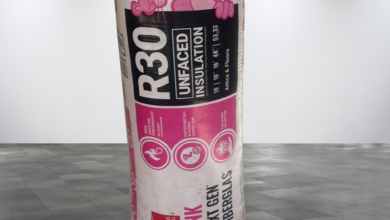Can Expanding Foam Be Tiled Over?

Tiles provide a number of advantages to property owners. Compared to some floor types, like wood, they are more durable, aesthetically pleasing, and easily cleaned.
In general, there are strict guidelines regarding the substrates that tiles should be installed on. That’s most likely the reason you’re looking into tiling over expanding foam.
Foam that expands has several uses. Its primary purpose is to seal cracks and holes in walls. Here’s everything you should know if you intend to tile over a wall that has expanding foam holes in it.
Can Tiles Be Adhered To Expanding Foam?
Tiles can adhere to expanding foam, yes. There are various methods that can be employed, like sandwiching plywood between the tiles and the expanding foam.
Alternatively, the surrounding region can strengthen the tile’s adherence if the expanding foam is limited to a small area. It is possible to adhere a tile over expanding foam. So the question is, will it last?
Can Tiles Be Repaired On Expanding Foam??
Covered with expanding foam, tiles don’t survive very long. Tiles have the drawback of being fairly susceptible to movement. It is for this reason that when installing tiles over substrates, we are advised to use uncoupling membranes.
Because expanding foam is so flexible, tiles may be at risk. The tiles will be impacted by the flexing expanding foam, which may ultimately cause cracking.
In summary, it is possible to adhere tiles to expanding foam, but the results of this type of work may not last for very long.
How Should Tiles Be Installed Over Expanding Foam?
It is not advisable to lay tiles directly on top of expanding foam. It is not advisable to do so, and the effects will most likely be temporary.
Using plywood or cement board over the expanding foam is the best method if you must tile over it.
The tiles will have better adhesion and won’t be impacted by the flex of the expanding foam if plywood or cement board is placed between them.
One of the deciding factors will be the size of the expanding foam. since the plywood will need to be cut to fit the expanding foam’s dimensions.
If you have expanded foam filled in any areas of your wall, place plywood or cement backer board in between before installing the tiles.
Is It Better to Take Out Expanding Foam Before Tiling?
A common temporary solution for wall cavities is expanding foam. Because of this, the majority of people choose to occasionally use it.
You might not be aware, though, that expanding foam can cause a number of problems down the road. This is a concrete illustration.
If you wish to tile over expanding foam that is currently installed on a wall. Eliminating the expanding foam is a very wise move.
You can replace the foam with a leveling compound that won’t flex and won’t break your tiles after removing the foam.
You won’t have to be concerned about your tiles being exposed to movement because there isn’t any expanding foam inside the walls.
Many choose to cover the expanding foam with plywood instead of removing it before tiling because it can be quite a hectic process.
Which Tiling Substrate Is Suggested?
The unusual nature of tiling over expanding foam accounts for the tiles’ short lifespan after that. Cement board is the recommended substrate for tiling.
As long as the installation is done correctly, tiles adhere fairly strongly to cement board and will not come off for years.
The expanding foam is more flexible than cement board. As a result, you can install tiles with confidence and not worry about them cracking later.
Is It Possible to Tile a Small Area Using Expanding Foam?
There isn’t a wall or floor made entirely of expanding foam. As was already mentioned, cavities are filled with this product.
This creates an opportunity for tiling over any small areas where you may have expanding foam. You can mortar and tile over as long as there isn’t much expanding foam present and the surface is in excellent condition overall.
To allow the mortar to enter the opening, however, you must make sure the expanding foam is cut much deeper.
As a result, you can ignore a tiny, discrete area and cover it with expanding foam.
How Should a Plasterboard Be Fixed for Tiling?
Plasterboard dents are often filled with expanding foam. Prior to putting in new tiles, you will need to repair the plasterboard if there were any old tiles on it that you damaged during the removal process. How then can the damaged plasterboard be repaired?
You must first determine the extent of the damage. You’re left with no choice but to replace the damaged plasterboard with a new one if it can no longer be repaired.
However, you can fit smaller pieces of plasterboard inside if the dents are not too big. Plasterboard adhesive can be used to secure the smaller components into place. Installing new tiles cannot be done until the damaged plasterboard has been repaired.
Is It Possible to Attach Expanding Foam To Tile Using Construction Adhesives?
Expanding foam isn’t a common substrate for tiling, so you might need to use an adhesive. But, when selecting construction adhesives that won’t dissolve expanding foam, you’ll need to exercise extreme caution.
Using the incorrect adhesive will lead to the tiles eventually coming off. Do we advise adhering tiles to expanding foam with construction adhesives? Not at all.
In the construction business, following the book is usually the best course of action. Use a cement board and thinset mortar as the adhesive when installing tiles.
As soon as you begin improvising, you are setting yourself up for failure. Installing tiles over expanding foam is not recommended, despite its convenience. There is very little chance that the tiles will adhere.
Is There A Risk Of Moisture Damage To Expanding Foam?
Most places where tiles are installed are those that are frequently exposed to moisture. Pools and restrooms are two examples.
The drawback of laying tiles over expanding foam is that the foam will eventually degrade from exposure to moisture or water over an extended period of time. The tiles will probably fail after that, which can be a major setback.
Is There Help From An Uncoupling Membrane?
When tiles are installed on a substrate that is subjected to a lot of lateral stress, decoupling membranes are helpful. One great example of such a substrate is expanding foam.
It would be wise to take into account using a decoupling membrane, such as DITRA or Laticrete Strata Mat, if you must tile directly over expanding foam. Tiles won’t break because of these membranes, which will absorb the expansion of foam.
What Should You Do If You Look Under Your Tiles and See Expanding Foam?
You might be concerned about how long the tiles will last on the surface if you recently moved into a new house and found expanding foam beneath the tiles.
If the tiles are in tact, there’s no need to be concerned about them falling off. Any of the previously listed methods could have been employed by the installer.
Still, you should be ready for anything that could go wrong at all times. If the tiles eventually break, your only choice will be to replace them.
How Can Expanding Foam Be Covered?
Although tiling appears to be a great way to cover expanding foam, there are a lot of drawbacks. A paint job would be the best option if you wanted to cover expanding foam.
In contrast to tiling, painting is fairly simple. The expanding foam will need to be cut and sanded. Then apply multiple coats of paint directly over.
Nevertheless, tiling over expanding foam is a difficult procedure. It is preferable to choose the simpler solution.
Is Expanding Foam Worth Tiling Over?
For the numerous reasons we have discussed with you, seasoned builders will strongly advise against tiling over expanding foam. The process of tiling over expanding foam is intricate and fraught with uncertainty.
It’s simple to get the tiles to adhere. The issue, though, is one of longevity. Over time, tiling over expanding foam isn’t worth the time or effort because it requires a lot of work and has a low success rate.
It is preferable to remove the expanding foam and replace it with a suitable substrate, like a cement board, rather than taking a chance. Alternatively, if the walls have plasterboard, you can fix it before applying the plaster.
Can Mortar Adhere To Increasing Foam?
Thinset mortar is the adhesive used in the majority of tile installation projects. Knowing whether thinset mortar will adhere to expanding foam is therefore crucial. Over expanding foam, thinset mortar will dry up, but the structure won’t be sturdy.
You should reinforce the thinset mortar with another material, preferably a fiberglass mesh, to make sure it provides a strong foundation for the tiles.
Is Expanding Foam An Appropriate Tile Substrate?
These days, cement boards are the only appropriate substrate for tiles. For the tiles to stick and adhere for an extended period of time, anything else needs to be customized. Not even in the top five best substrates for tiles is expanding foam.

